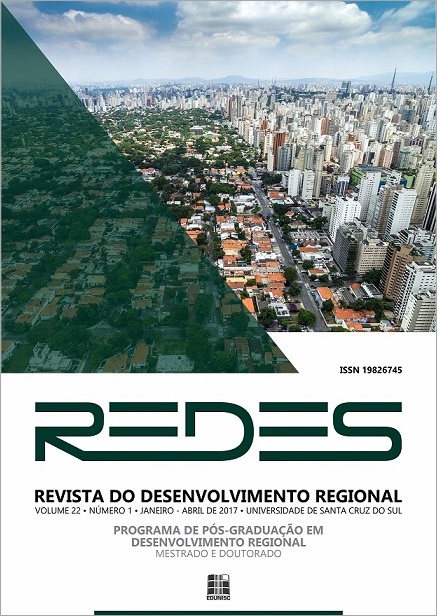Configuration of power in Codeter: an analysis of the Territory of Citizenship Noroeste Colonial-RS
DOI:
https://doi.org/10.17058/redes.v22i1.5259Keywords:
Deliberative citizenship. Social Participation. Territories of Citizenship.Abstract
This article aims to identify and analyze the configuration of the power in the Governing Board of the Territory Northwest Noroeste Colonial-TC-Norc of Rio Grande do Sul, according to "Power Configuration" proposed by Allebrandt (2010), category from the perception of the members of the Governing Board, referring to the configuration of the power of the college, founded in processes to the participation of the individuals involved. The methodology chosen for this study was interviews with representatives of civil society, government, members of the governing core, core technical, sectoral and specialized advisory services, as well as participation in meetings by program and document analysis. The results showed that the composition of the college is guided by pluralism, because there is the involvement of government and civil society. We note that civil society participates in more assiduously power configuration, considering that through the Territories of Citizenship, found an opening to expose their yearnings. Already the government turned away when they did not receive all the resources they craved.Downloads
Download data is not yet available.
Downloads
Published
2016-12-31
How to Cite
Deckert, C. T. (2016). Configuration of power in Codeter: an analysis of the Territory of Citizenship Noroeste Colonial-RS. Redes , 22(1), 402-429. https://doi.org/10.17058/redes.v22i1.5259
Issue
Section
Articles



